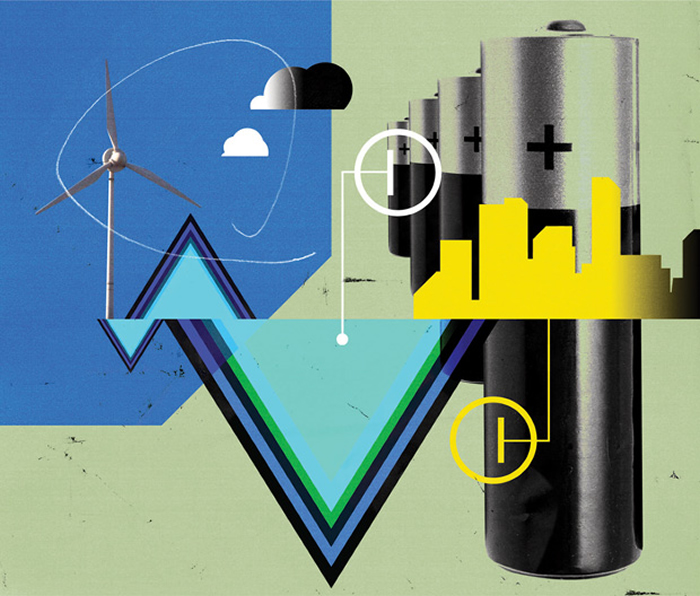The bigger, the better, for solar power storage
It would be a lot easier to expand our use of solar and wind energy if we had better ways to store the large quantities of electricity we’d need to cover gaps in the flow of that energy.
Even in sunny Los Angeles, a typical house roofed with enough photovoltaic panels to meet its average needs would still face daily shortfalls of up to about 80% of the demand in January and daily surpluses of up to 65% in May. You can take such a house off the grid only by installing a voluminous and expensive assembly of lithium-ion batteries. But even a small national grid—one handling 10-30GW—could rely entirely on intermittent sources only if it had gigawatt-scale storage capable of working for many hours.
Since 2007, more than half of humanity has lived in urban areas, and by 2050 more than 6.3 billion people will live [PDF] in cities, accounting for two-thirds of the global population, with a rising share in megacities of more than 10 million people. Most of those people will live in high-rises, so there will be only a limited possibility of local generation, but they’ll need an unceasing supply of electricity to power their homes, services, industries, and transportation.
Think about an Asian megacity hit by a typhoon for a day or two. Even if long-distance lines could supply more than half of the city’s temporarily lowered demand, it would still need many gigawatt-hours from storage to tide it over until intermittent generation could be restored (or use fossil fuel backup—the very thing we’re trying to get away from). Li-ion batteries, today’s storage workhorses in both stationary and mobile applications, are quite inadequate to meet those needs. The largest announced storage system, comprising more than 18,000 Li-ion batteries, is being built in Long Beach for Southern California Edison by AES Corp. When it’s completed, in 2021, it will be capable of running at 100MW for 4 hours. But that energy total of 400MW-hours is still two orders of magnitude lower than what a large Asian city would need if deprived of its intermittent supply. For example, just 2GW for two days comes to 96GW-hours.
We have to scale up storage, but how? Sodium-sulfur batteries have higher energy density than Li-ion ones, but hot liquid metal is a most inconvenient electrolyte. Flow batteries, which store energy directly in the electrolyte, are still in an early stage of deployment. Supercapacitors can’t provide electricity over a long enough time. And compressed air and flywheels, the perennial favorites of popular journalism, have made it into only a dozen or so small and midsize installations. We could use solar electricity to electrolyze water and store the hydrogen, but still, a hydrogen-based economy is not imminent.
And so when going big we must still rely on a technology introduced in the 1890s: pumped storage. You build one reservoir high up, link it with pipes to another one lower down and use cheaper, nighttime electricity to pump water uphill so that it can turn turbines during times of peak demand. Pumped storage accounts for more than 99% of the world’s storage capacity, but inevitably, it entails energy loss on the order of 25%. Many installations have short-term capacities in excess of 1GW—the largest one is about 3GW—and more than one would be needed for a megacity completely dependent on solar and wind generation.
But most megacities are nowhere near the steep escarpments or deep-cut mountain valleys you’d need for pumped storage. Many, including Shanghai, Kolkata, and Karachi, are on coastal plains. They could rely on pumped storage only if it were provided through long-distance transmission. The need for more compact, more flexible, larger-scale, less costly electricity storage is self-evident. But the miracle has been slow in coming.
More information: IEEE Spectrum



Comments are closed, but trackbacks and pingbacks are open.